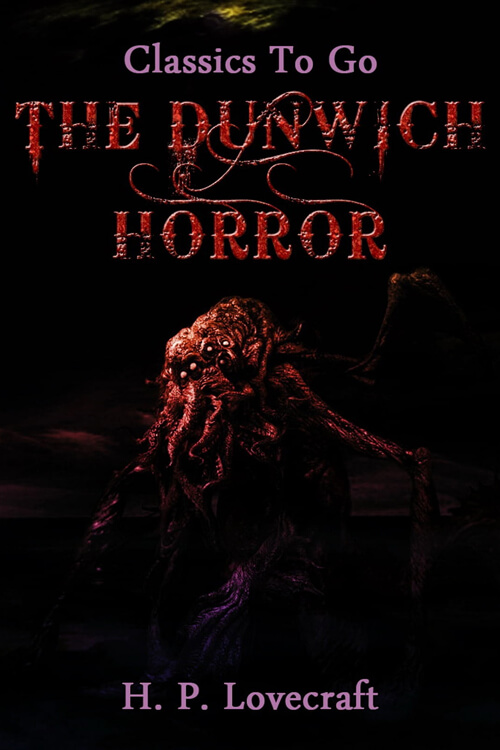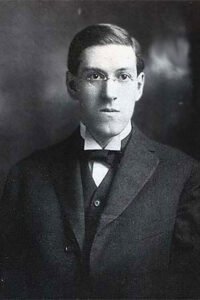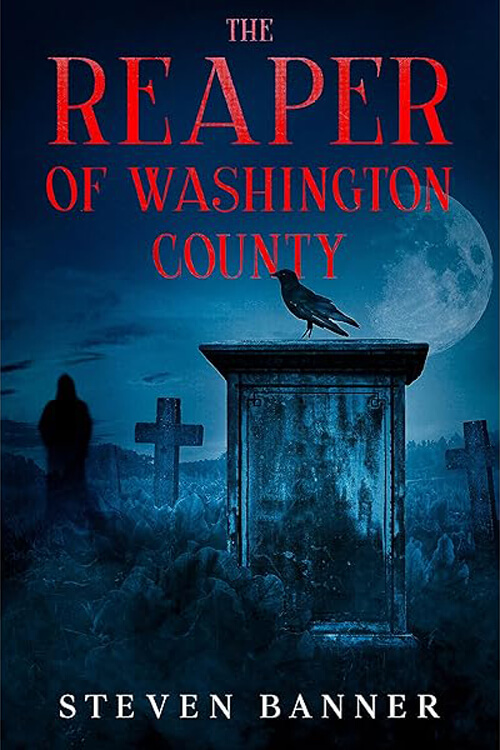
The Dunwich Horror
At the same time the planted fields appear singularly few and barren; while the sparsely scattered houses wear a surprisingly uniform aspect of age, squalor, and dilapidation.
Without knowing why, one hesitates to ask directions from the gnarled solitary figures spied now and then on crumbling doorsteps or the sloping, rock-strewn meadows. Those figures are so silent and furtive that one feels somehow confronted by forbidden things, with which it would be better to have nothing to do. When a rise in the road brings the mountains into view above the deep woods, the feeling of strange uneasiness is increased. The summits are too rounded and symmetrical to give a sense of comfort and naturalness, and sometimes the sky silhouettes with special clearness the queer circles of tall stone pillars with which most of them are crowned.
Gorges and ravines of problematical depth intersect the way, and the crude wooden bridges always seem of dubious safety. When the road dips again there are stretches of marshland that one instinctively dislikes, and indeed almost fears at evening when unseen whippoorwills chatter and the fireflies come out in abnormal profusion to dance to the raucous, creepily insistent rhythms of stridently piping bull-frogs. The thin, shining line of the Miskatonic’s upper reaches has an oddly serpent-like suggestion as it winds close to the feet of the domed hills among which it rises.
As the hills draw nearer, one heeds their wooded sides more than their stone-crowned tops. Those sides loom up so darkly and precipitously that one wishes they would keep their distance, but there is no road by which to escape them. Across a covered bridge one sees a small village huddled between the stream and the vertical slope of Round Mountain and wonders at the cluster of rotting gambrel roofs bespeaking an earlier architectural period than that of the neighboring region. It is not reassuring to see, on a closer glance, that most of the houses are deserted and falling to ruin, and that the broken-steepled church now harbors the one slovenly mercantile establishment of the hamlet. One dreads to trust the tenebrous tunnel of the bridge, yet there is no way to avoid it. Once across, it is hard to prevent the impression of a faint, malign odor about the village street, as of the massed mold and decay of centuries. It is always a relief to get clear of the place and to follow the narrow road around the base of the hills and across the level country beyond till it rejoins the Aylesbury pike. Afterwards one sometimes learns that one has been through Dunwich.
Read or download Book
H. P. Lovecraft
Howard Phillips Lovecraft (August 20, 1890 – March 15, 1937) was an American writer of weird, science, fantasy, and horror fiction. He is best known for his creation of the Cthulhu Mythos.
Biography.
Born in Providence, Rhode Island, Lovecraft spent most of his life in New England. After his father’s institutionalization in 1893, he lived affluently until his family’s wealth dissipated after the death of his grandfather. Lovecraft then lived with his mother, in reduced financial security, until her institutionalization in 1919. He began to write essays for the United Amateur Press Association, and in 1913 wrote a critical letter to a pulp magazine that ultimately led to his involvement in pulp fiction. He became active in the speculative fiction community and was published in several pulp magazines. Lovecraft moved to New York City, marrying Sonia Greene in 1924, and later became the center of a wider group of authors known as the “Lovecraft Circle”. They introduced him to Weird Tales, which would become his most prominent publisher. Lovecraft’s time in New York took a toll on his mental state and financial conditions. He returned to Providence in 1926 and produced some of his most popular works, including The Call of Cthulhu, At the Mountains of Madness, The Shadow over Innsmouth, and The Shadow Out of Time. He would remain active as a writer for 11 years until his death from intestinal cancer at the age of 46.
Lovecraft’s literary corpus is based on the idea of cosmicism, which was simultaneously his philosophy and the main theme of his fiction. Cosmicism posits that humanity is an insignificant part of the cosmos and could be swept away at any moment. He incorporated fantasy and science fiction elements into his stories, representing the perceived fragility of anthropocentrism. This was tied to his ambivalent views on knowledge. His works were largely set in a fictionalized version of New England. Civilizational decline also plays a major role in his works, as he believed that the West was in decline during his lifetime. Lovecraft’s early political views were conservative and traditionalist; additionally, he held many racist views for much of his adult life. Following the Great Depression, Lovecraft’s political views became more socialist while remaining elitist and aristocratic.
Throughout his adult life, Lovecraft was never able to support himself from his earnings as an author and editor. He was virtually unknown during his lifetime and was almost exclusively published in pulp magazines before his death. A scholarly revival of Lovecraft’s work began in the 1970s, and he is now regarded as one of the most significant 20th-century authors of supernatural horror fiction. Many direct adaptations and spiritual successors followed. Works inspired by Lovecraft, adaptations or original works, began to form the basis of the Cthulhu Mythos, which utilizes Lovecraft’s characters, setting, and themes.






